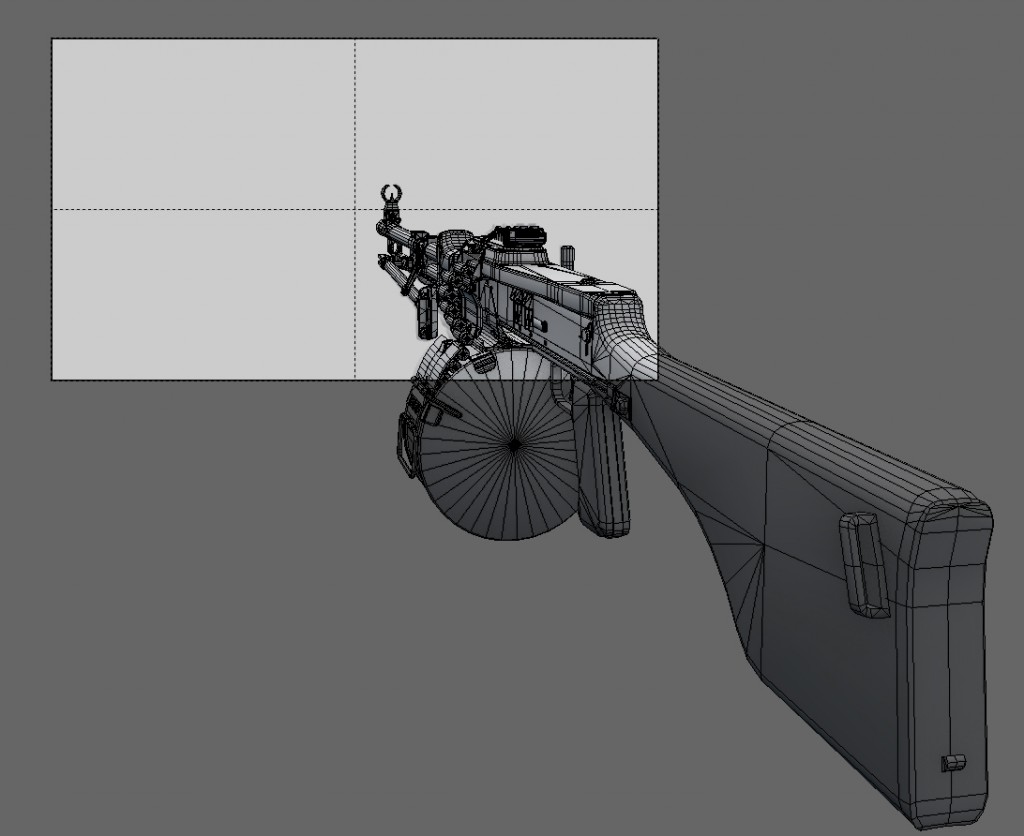The FPP perspective is very limiting. In a frame only a part of weapon is visible, and this part is the most important for a graphic. All elements should be given the right proportions and arrangement so that the cropped picture would show more than is really visible. All the uniqueness of a weapon must be expressed in this visible part. Therefore, while working on a silhouette it’s worth checking if what we can see in the FPP perspective applies to the features of the whole object.

When a prop is placed statically, on the right side of the screen, its left side is far more important. Such assumption causes that some parts of the object are mirrored to make it more attractive in the frame.
![Yaron Levi. <b>MSBS Call of Duty: Ghosts</b> [portfolio online]. 2013, <i>source: http://yaron-levi.squarespace.com/call-of-duty-ghosts/</i>](http://piratportfolio.com/fpp_eng/wp-content/uploads/2015/08/3.1.A.II_.jpg)
![Ubisoft Montreal. <b>Far Cry 4</b> [PS4]. Ubisoft, 2014, <i>source: http://www.imfdb.org/wiki/Far_Cry_4#FN_Minimi</i>](http://piratportfolio.com/fpp_eng/wp-content/uploads/2015/08/FC4-MKG-71-1024x576.jpg)
- crossing the geometry of different attachments,
- incorrect scale of attachments,
- incoherent width of fixing devices (e.g. a rail),
- maladjustment caused by mutual exclusion of attachments, e.g. lack of possibility to attach a torch and a grenade launcher together.
An example of the extensive system of weapon customization. In this case all the parts had to be well thought and adjusted at the stage of whitebox creation.